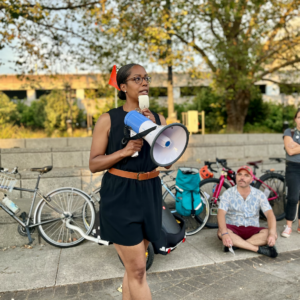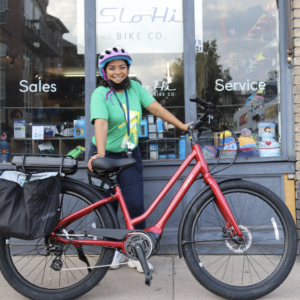High quality models are essential to making the right decisions about how we build our transportation systems. What do beautiful people have to do with transportation? Nothing! I’m talking about transportation models.
For instance, if your model includes motorized vehicle “traffic flow” as a fundamental component and barely includes bicycles or other modes, what do you think the outcomes from that model will be? Yep, you guessed it, more highways to accomodate more cars, and a tiny scrap or two left for bicycles. Unfortunately, that situation is one of the major problems in transportation planning today.
ODOT is going to lose 40 percent of staff in the next five years to retirement, “making it essential to get tools and expertise to the next generation.”
However, thanks in large part to research centers like the Oregon Transportation Research and Education Consortium (OTREC, housed at Portland State University) and innovative agencies like Metro, transportation modeling has come a long way in recent years. Today’s models take into account more than just “traffic flow” and “level of service” to motorized vehicles; they consider factors like biking and walking traffic, greenhouse gas emissions, and more.
Today, OTREC will officially launch their Oregon Modeling Collaborative with a visit from Peter Appel, administrator of the federal Research and Innovative Technology Administration (RITA). According to OTREC, the collaborative will “serve as a living laboratory to put the research from some of America’s top modelers into practice around Oregon.”
The key push from OTREC is to take the new models that have been created and make sure the next generation of transportation engineers and planners are trained to use them. According to Jerri Bohard, the interim deputy director of operations for the Oregon Department of Transportation, ODOT is going to lose 40 percent of staff in the next five years to retirement, “making it essential to get tools and expertise to the next generation.”
One of these new models (also a project of OTREC) is one to determine “travel demand models for bicycling.” Began in 2009, the model is being developed for Metro by Assistant Professor at PSU John Gliebe and noted bicycle transportation researcher Jennifer Dill. Building on Dill’s groundbreaking Bike GPS Project, the new bicycle travel demand model seeks to make the bicycling mode a more prominent and fundamental component of transportation models.
As scientists and planners develop more sophisticated data and research on bicycling, they can input that data into more sophisticated models with a result that better reflects all modes of travel (not just motor vehicles).
Speaking at today’s event along with Peter Appel from USDOT are Oregon Modeling Collaborative Director Kelly Clifton, Jerri Bohard, the interim deputy director of operations for the Oregon Department of Transportation, and Wim Wiewel, president of Portland State University. Learn more about today’s event on OTREC’s website.







Thanks for reading.
BikePortland has served this community with independent community journalism since 2005. We rely on subscriptions from readers like you to survive. Your financial support is vital in keeping this valuable resource alive and well.
Please subscribe today to strengthen and expand our work.
Jonathan – Can you tell us what model PBOT is using today, how old it is, and whether it includes bikes yet?